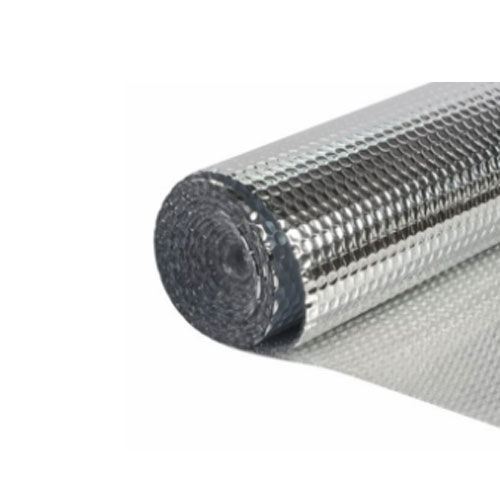Chandigarh Engineers provides high-quality aluminium bubble wrap insulation designed to offer superior thermal protection and energy efficiency. Our aluminium bubble wrap insulation is engineered to provide effective thermal barriers and reflectivity in a variety of applications, ensuring optimal performance in both residential and industrial settings.
Features:
- Advanced Insulation Technology: The insulation features a bubble layer sandwiched between two layers of aluminium foil. This construction provides excellent thermal insulation by reflecting heat and reducing heat transfer.
- High Reflectivity: The aluminium foil surface offers high reflectivity, effectively bouncing back radiant heat and contributing to improved energy efficiency and temperature control.
- Durable and Lightweight: Made from durable materials, our bubble wrap insulation is lightweight and easy to handle, making it suitable for various installation applications without adding significant weight.
- Moisture Resistance: The aluminium foil and bubble layer combination provides resistance to moisture and water vapor, helping to prevent condensation and maintain insulation performance.
Benefits:
- Enhanced Energy Efficiency: By reflecting radiant heat and reducing heat transfer, our aluminium bubble wrap insulation helps to lower energy consumption for heating and cooling, leading to cost savings and improved energy efficiency.
- Improved Temperature Control: The insulation helps maintain consistent temperatures within buildings or industrial facilities, enhancing comfort and operational efficiency.
- Easy Installation: The lightweight and flexible nature of the insulation allows for easy installation in various applications, including walls, ceilings, floors, and ductwork.
- Durability and Longevity: Constructed from high-quality materials, our insulation is built to withstand harsh conditions and provide long-lasting thermal protection.
Applications: Chandigarh Engineers' aluminium bubble wrap insulation is ideal for use in:
- Residential Buildings: Insulating walls, ceilings, and floors to improve energy efficiency and comfort in homes.
- Industrial Facilities: Providing thermal insulation for equipment, pipes, and ductwork to enhance energy efficiency and prevent heat loss.
- HVAC Systems: Improving the efficiency of heating, ventilation, and air conditioning systems by insulating ducts and pipes.
- Agricultural Buildings: Maintaining optimal temperatures in greenhouses and animal housing to support growth and productivity.
